Imagine hearing colors, tasting sounds, or seeing noises. Imagine memorizing a song by remembering the colors you hear in it, or watching the girl in front of you fracture her leg and feeling that sharp sensation of your own bone snapping as a result. These are not abnormal occurrences for synesthetes, or people with a neurological condition called synesthesia. Synesthesia is characterized by mixing senses that are not usually put together, or when a stimulus activates many senses when it typically involves only one. Synesthesia is difficult to understand by those who do not experience it, and its effects can be spun into both positives and negatives. Synesthetes each experience a unique set of perceptions individual of anyone else, and these odd outlooks on the world can provide new insight. In other words, synesthesia was a perfect “tool” for modernists to take grasp of.
Synesthesia only made its debut as a worthy issue for the medical world to investigate starting in the early 1800s. However, what truly brought synesthesia to the spotlight was a French sonnet called “Voyelles” by Arthur Rimbaud in 1883 that associated alphabetical letters with colors. His artistry of turning the condition into a beautiful and poetic piece of literature became exceptionally popular, and inspired further weaving of many senses into art.

Modernists taking advantage of a synesthesia itself is a prime representation of modernist culture; when previously taking hold of a “disorder” and spinning it into a literary tool would have been utterly unacceptable, it was a stroke of genius in modernism. Modernists intentionally seek the awkward and the unspoken, and ultimately try and find new ways to look at the world. Modernists adopted a synesthetic approach, specifically in art, by mixing multiple senses (i.e. taste and sound) in order to communicate something in a deeper way. For example, the image below is a visual representation of what a synesthete could perceive upon listening to music. Not only do they hear all the instruments and singing melodies, but they feel the tactile patterns and sharp corners, they see the colors jumbling together in the chaos of a crazy song.
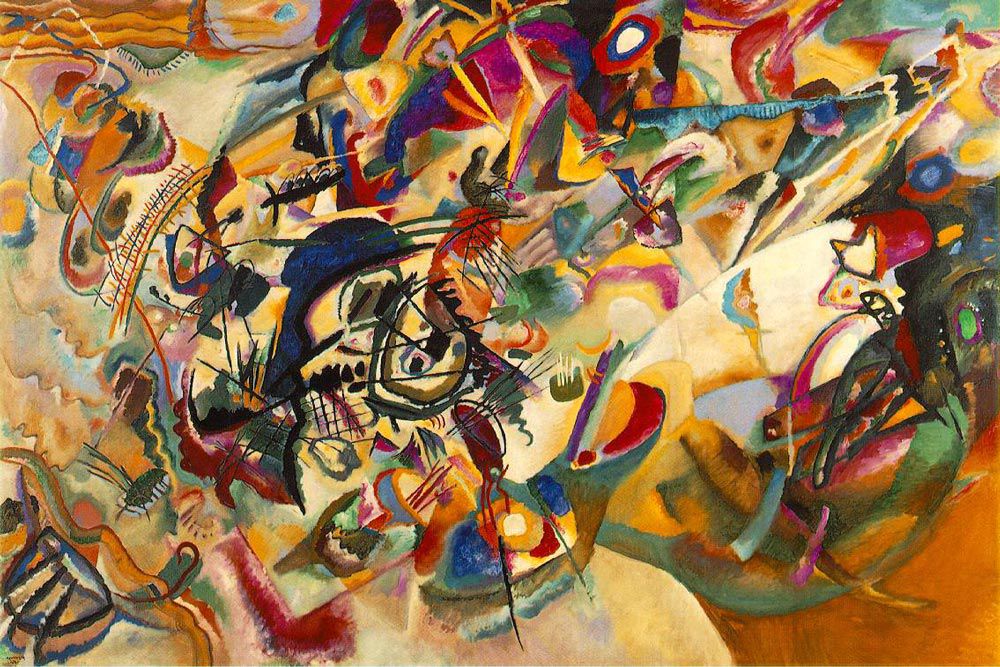
Modernists created art similar to this to emphasize the many perspectives that can be taken on the world. It is like a three-dimensional object or movie versus a two-dimensional. A three-dimensional object is simply one that has more faces than a two-dimensional, for example a square has essentially one (or two if you count the flip-side) faces, while a cube has six. The three-dimensional object takes up a considerably larger amount of physical space while also covering more surface area. The more perspectives that are added, the more impactful the object/idea can be. For example, the World of Coca-Cola in Atlanta has a four-dimensional movie production as part of their museum. While sitting in the theatre, visitors will experience objects projecting off the screen, water spritzing onto their faces, and their seats rumbling and prodding them in the back. This allows visitors to experience the film rather than just watching it, similar to how a synesthete is stimulated in many senses rather than just one. Modernists would eagerly endorse this method of weaving together multiple perspectives to create one that has not been previously discovered, and this idea can be applied to cities.
Cities have a lot going on. That much is obvious. I hated that part. I am a huge fan of nature and being far away from the rest of the world; my ideal view contains solely mountains and natural landscape, with not a manmade structure or building in sight. The city has always been a place of stress to me, where all I can see is the gray, shiny, concrete jungle of looming infrastructure that humans have replaced the natural beauty of earth with. Even just the color of the city—gray— is what it makes me feel like: dull. Polluted. Busy. Selfish. Loud.
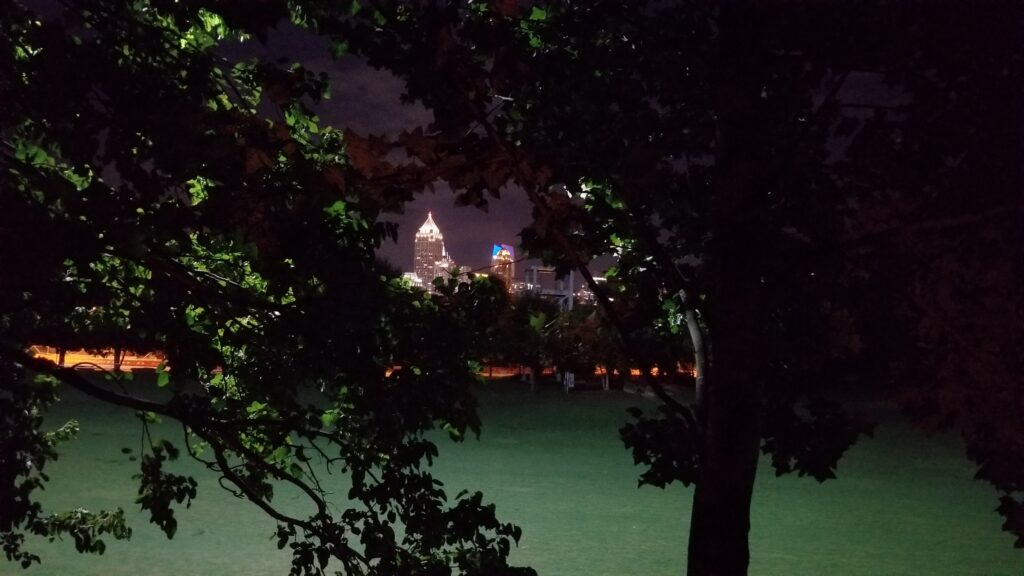
That last word, “loud,” was my biggest annoyance with the city. One reason that I love nature is because of the serenity it brings, just that overwhelming feeling of peace. The city appears to be the polar opposite as far as its constant traffic, blaring car horns, people and vehicles rushing to be places, and luminous signs all trying to grab passersby’s’ attention. Despite living relatively close to Atlanta my whole life, I did not spend much time visiting the city, and I sure preferred it that way. If I had to wrap up Atlanta in one word, I would choose the word “loud.”
But maybe it is loud, just not in a “noisy” sense. Maybe to appreciate Atlanta and other cities for what they truly stand for, it is necessary to take a more modernist or synesthetic approach and apply the city’s “loudness” to multiple senses. And oddly enough, what it took for me to gain modernist insight on viewing cities was to visit an island city that is practically the furthest you can get from exemplifying modernism.
A couple summers ago, my family took a vacation to an island in the eastern Caribbean called St. Lucia. Driving around on the island was odd enough considering the stray dogs everywhere, mangoes piled up in the gutters, and constantly trying to drive on the right—in this case, wrong— side of the road, but what truly shocked me was how loud a small country and its capital of Castries could be. And not just loud in an audible sense. The tin-roofed houses of Castries were each painted their own lusty color, blanketing the hillsides with a rainbow. Restaurants and small vendors managed to bring out the most exotic and authentic flavors within average-seeming food, like the cook who revealed to my family that the key ingredient of his potato salad was slightly different from the typical mayonnaise: swordfish.
The most impressive difference between my go-to city in mind, Atlanta, and Castries was the honking. In Atlanta, honking stands out to me as a symbol of aggression and frustration. I suppose it is necessary based on the amount of irrational decisions that drivers in Atlanta make, but Atlanta constantly has drivers angrily honking at one another for cutting other drivers off, not moving fast enough, and truly everything in between. But in Castries, honking was used as a language. My family quickly realized that the locals in Castries would honk their car horns to say “thank you” or “hey” to other drivers or people they knew on the road, and honks should be taken as compliments or friendly greetings rather than outbursts of irritation and impatience. In fact, they even loved the horn so much that songs on the radio included it! To say the least, it was quite the surprise when the upbeat, steel drum Caribbean songs were interrupted with the occasional air horn. Nonetheless, Castries showed me that “loud” can apply to many senses rather than just noise, and that to truly understand that noise, you may have to seek a new perspective.
Modernists would see Castries and instantaneously pull out their construction tools to get to work— it is a very under-developed city that could use a lot of progression and updating from traditional styles of both architecture and personality. Just the fact that not a single house was the same shade of color or had a roof of the same material made it nearly incomparable to any modern city. However, a non-modern city teaches a lot about modern cities. Upon returning to Atlanta, I started looking for new ways to interpret the “loudness” I had previously despised so strongly.
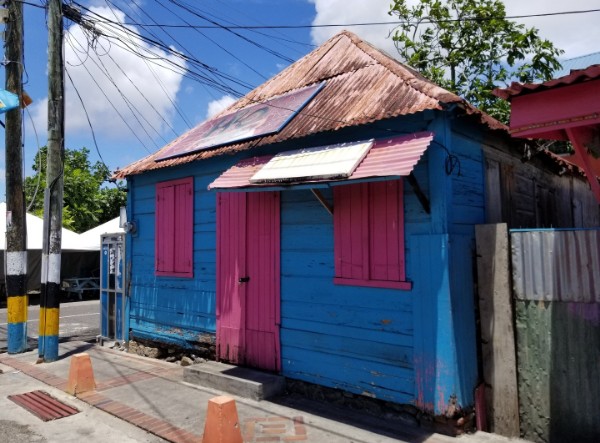
Slowly but surely, it seemed as if the fog seemed to wipe away. I did not completely fall in love with the city of Atlanta, but rather began to learn its language. The city is busy and drivers always seem to be in a rush to get places, but that is necessary for people to commute to their jobs that the world needs. Maybe they are commuting to a hospital or research center downtown where the next ground-breaking COVID-19 discovery will change the world. There are new buildings taking over plots of untouched soil everyday, but they are not just destroying nature and building infrastructure for an unworthy cause, it could be a small restaurant in which someone is making their dream come true of bringing foreign tastes from their home country into the big city. Maybe there are people crowding in the streets and it destroys that peace that I so prefer, but that is Atlanta’s way of making change happen. Those crowds can be swarms striving to make the world a more peaceful place as a whole, propagating change such as the Black Lives Matter movement did.
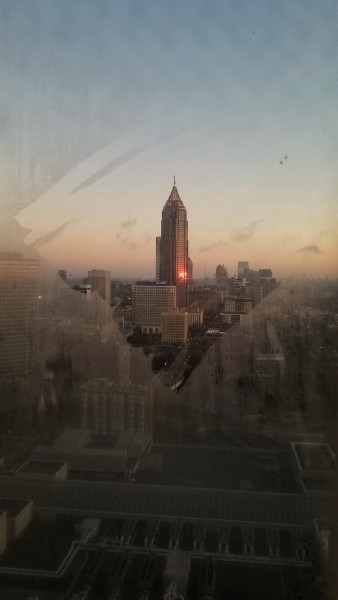
Is that so wrong of an idea, to find peace through chaos? Just as synesthetes take what should only appeal to one sense but perceive it as many, Atlanta can embrace loudness and busyness yet turn it into a peace and calm that did not exist prior to the storm.

Essentially, humans lack perception. It is similar to man’s natural tendency of selective hearing, in which we only focus on hearing one stimulus and tune out the irrelevant remaining ones. Modern cities are rapidly changing, and a lot of the perspectives and angles over the benefits or consequences of such changes are easily overlooked. To appreciate a city for what it is worth, people must take in the “loudness” of a city as a language rather than as a sound. Take the time to learn a city’s language.
Sources:
Dimova, P.(2016). Synaesthesia. In The Routledge Encyclopedia of Modernism. : Taylor and Francis. Retrieved 28 Feb. 2021, from https://www.rem.routledge.com/articles/synaesthesia. doi:10.4324/9781135000356-REM1011-1
Tajiri, Y. (2001). BECKETT AND SYNAESTHESIA. Samuel Beckett Today / Aujourd’hui, 11, 178-185. Retrieved March 1, 2021, from http://www.jstor.org/stable/25781368
Itoro Umontuen | on June 24, 2. (2020, June 24). Black lives Matter protests have not led to a spike in coronavirus cases, research says: The atlanta voice. Retrieved March 01, 2021, from https://www.theatlantavoice.com/articles/black-lives-matter-protests-have-not-led-to-a-spike-in-coronavirus-cases-research-says/
Copeland, L. (2017, January 05). Feel the music-literally-with some help from new synesthesia research. Retrieved March 01, 2021, from https://www.smithsonianmag.com/science-nature/feel-the-music-with-help-from-synesthesia-research-180961660/
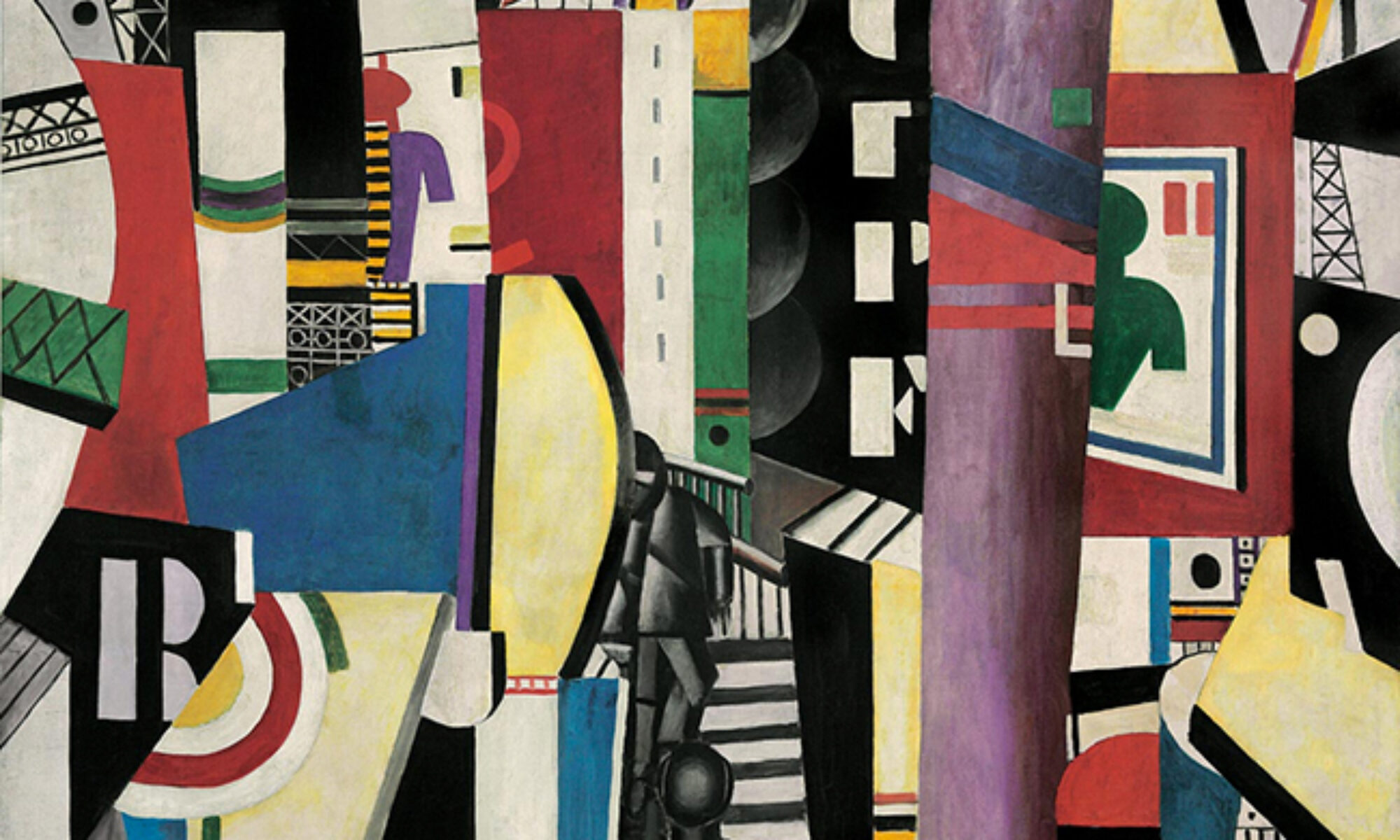
Its like you read my mind! You appear to know
so much about this, like you wrote the book in it or something.
I think that you could do with a few pics to drive the message home a little bit, but instead of
that, this is excellent blog. A fantastic read. I will certainly be
back.